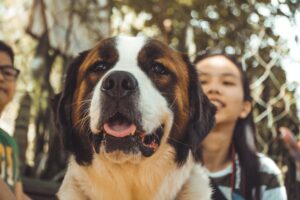Pets and Their People Blog
Before You Adopt Your Rescue Dog
We will be digging into information current and/or future dog guardians should consider before they adopt a (another) dog.
Let’s Explore the Subject of How to Choose a Dog
You can use the following as a guide:
- Visit often. Keep in mind, that the shelter environment is generally more stressful than the average home. Dogs who exhibit overarousal in the rescue environment might be calmer in a home environment. Visit the dog often and ask the shelter staff to take the dog to a play garden or a calmer environment where you can spend some time with him or her.
- Set up a meet and greet. Some dogs come across as dog reactive in a rescue but will be able to live with other dogs in a calmer environment. If you already have other dogs, set up a meet and greet with the new dog and a force-free trainer or behavior consultant to help see if the dogs will get along.
- Other pets. It’s also important, if you have a cat, free-roaming bird, or other pets to see how the new addition will respond to them.
- Consult a professional. Many shelters do have the means to do cat tests, but they are not necessarily reliable. A stationary cat is a very different creature than a running cat. And the shelter environment is very different from a home environment; the dog’s behavior might be different towards the cat at home. If you are worried, it would be better to consult with a professional to assist with an introduction and assessment at your home.
- Research the breed. If the dog’s breed is known, make sure to research the breed. Knowing the innate behaviors and grooming practices of a specific breed will give you a good idea of whether you will be able to meet the dog’s needs or not.

If you are a first-time dog guardian, adopting an adolescent puppy might be challenging. Photo by Gian Paul Guinto on Unsplash
- What is the best age to adopt a puppy? Understanding a puppy’s developmental phases will help you make the best decision about what age could best suit your household, or what to expect when you adopt a puppy of any age.
- First puppy? For first-time puppy owners, the age between 12 and 20-weeks is a good age to adopt. The puppy is confident, curious and eager to take part in rewarding training and activities. They can still easily be socialized with other dogs and attend group classes.
- Adolescent dogs. When a puppy starts reaching the ages of 5 and 6 months, adolescence sets in. Hormones are changing, energy levels are increasing and boundaries are being tested. If you are a first-time dog owner, adopting an adolescent puppy might be challenging and you will need the assistance of a professional so that you can start working on a behavior management and training program to put in place as soon as the pup arrives at your home.
Additional Considerations – Time and Other Resources
- When we adopt older dogs, they may need more time to decompress and adjust to their new homes. How much time? It depends on the dog.
- The cost of acquiring a rescue pet depends on the shelter’s adoption fee. It’s a once-off fee that helps to cover the dog’s initial vaccinations, sterilization, microchip, etc. Keep in mind that once you have adopted the dog, all further costs (veterinary and other) are your responsibility.
About the Author

Tersha Bateman is a qualified, accredited dog trainer at DoggoGenius in Johannesburg, South Africa. She has experience with all types of scenarios from hand raising orphaned puppies, rehabilitating severely neglected and traumatized dogs, working with highly aggressive and reactive dogs, to training shelter staff and teaching vital skills to help pet dogs and their owners live their best lives together. She is also a dog training and behavior facilitator at an animal behavior college. All of this is done by using a mindful, force-free philosophy and modern scientific training techniques.
